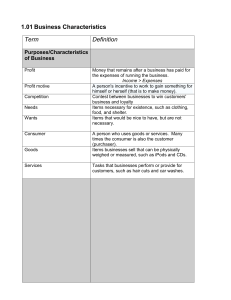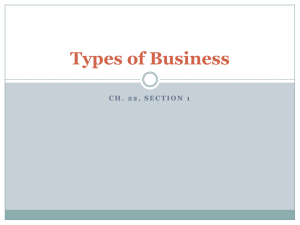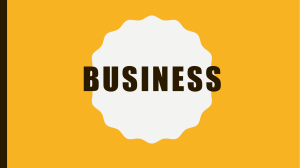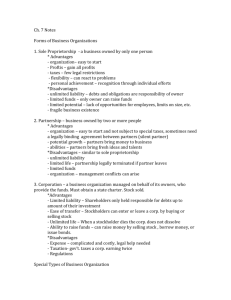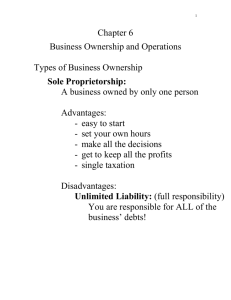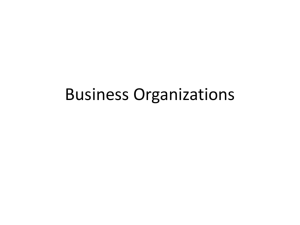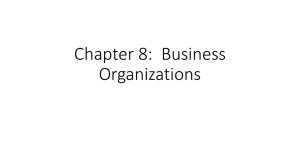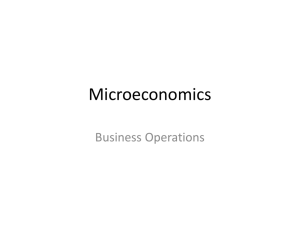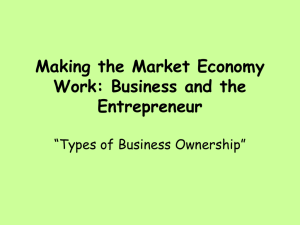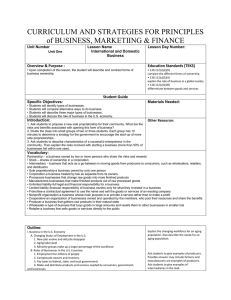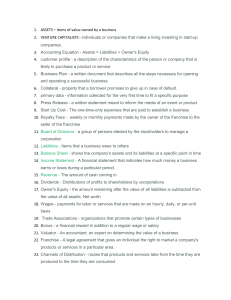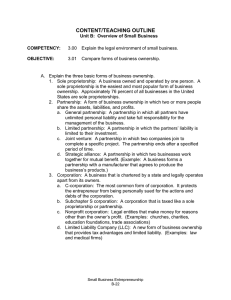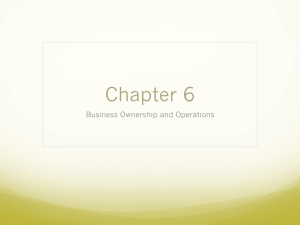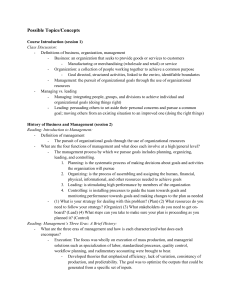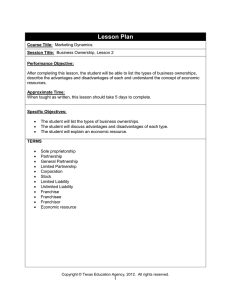Understand principles of business 01.00
advertisement
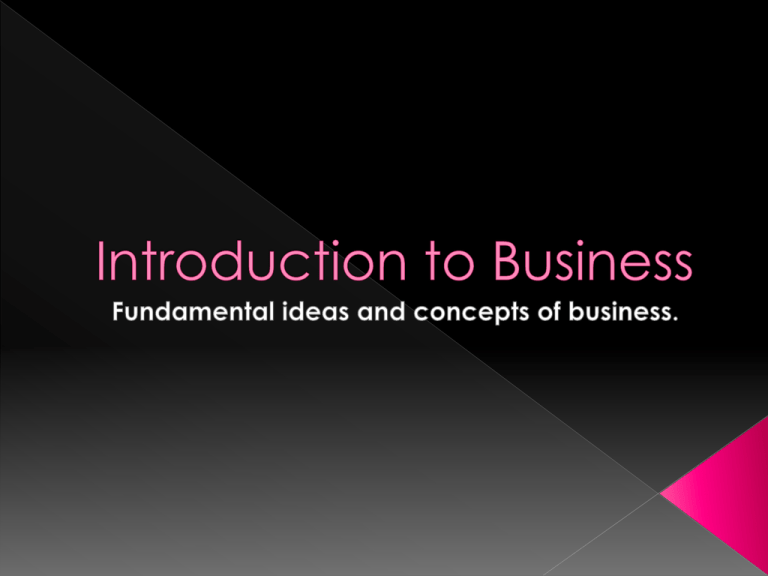
A business is a legal entity that is set-up or designed to make goods, sell goods, or provide a service. Businesses fulfill the needs and wants of consumers. › Needs – Things necessary for existence › Wants – Things that are not necessary for existence but are nice to have › Consumers use goods and services › Customers purchase goods and services Businesses make or sell goods, provide services or do both for consumers/customers › Goods – items that can be physically weighed or measured. Tangible=touchable (Ex. clothing, cars, computers) › Services – actions or activities performed by a business for a consumer. Intangible=can’t be touched (Ex. dry cleaning, lawn care, babysitting) Profit motive - desire to make money; see the opportunity to make money in the marketplace. Opportunity to meet wants and needs of consumers Opportunity to increase competition in the marketplace Businesses are investment opportunities for individuals— future income Main goal is making a profit (earning more revenue than expenses) Produce and distribute goods and services based on consumer demand or desire Examples › Apple Computer › Sony › Domino’s Pizza › The Gap Can earn a profit, but its main goal is to help people, animals or the environment Cannot be run for the financial gain of the members or directors Donors’ Contributions are tax deductible Examples › American Red Cross › Salvation Army › Meals on Wheels › Homeless Shelters › St. Jude’s Children’s Hospital Sell goods to individual consumers/customers and to other businesses Retailers/stores and distributors are product businesses Examples › Old Navy › CD Stores › Best Buy › Dick’s Sporting Goods Provide services rather than goods Some service businesses meet needs (medical clinics, law firms) Some service businesses provide wants (taxi companies, ISPs) Examples › Barber shop › Dry Cleaners › Copy and Print Shops (Kinko’s) › Car repair shops Some businesses are both good and service businesses— they sell a good and provide a service. Examples › Automobile dealerships › Hair salons › Appliance stores › Can you think of others? Owned by one person Examples › Floral shops › Bookstores › Farms Advantages › Easy to start › Owner is his/her own boss › Owner keeps all profits Disadvantages › Owner must pay for everything needed for the business › Difficult to obtain capital needed to start › Owner might lack business skills › Unlimited liability—owner has full responsibility for company’s debts and can lose entire investment as well as personal assets Owned by two or more people Examples › Law firms › Medical practices › Auto Body Repair Advantages › Relatively easy to start › Easier to obtain capital than in a sole proprietorship › Partners share skills and talents › Partners share risks Disadvantages › Partnership agreement is needed to start › Partners might not get along well › Partners must share profits › Partnership must be reorganized if one partner quits › Partners share unlimited liability—all partners share the responsibility of a bad decision made by one partner (including debts) Owned by many people called stockholders, but treated by law as one person (can own property, pay taxes, make contracts) Examples › Nike › Facebook › Google Advantages › Corporations can raise money by selling stock › Limited liability—stockholders can only lose what they have invested › Corporation continues when stockholders sell stock › Corporation can always make money by selling more stock Disadvantages › Corporations are taxed on their profits › Government closely regulates corporation › More difficult to start a corporation › Must obtain a corporate charter from the state in which headquarters is located Franchise is a contractual agreement to sell a company’s products or services in a specific geographic area Examples › Taco Bell › Blockbuster › McDonald’s Advantages › Easy to start › Franchisee can rely on good name and expertise of the parent company › Franchisee can get needed guidance in operating the business from franchisor Disadvantages › Some franchisors are strict about how the business is run › Franchise is limited in what products or services can be sold › Franchise must operate like every other franchise Accounting - recording and reporting financial activity and transactions Management - the process of using available resources to effectively work with people and meet organizational goals. Marketing - satisfies the needs and wants of consumers through exchange. Based on the 4 P’s (product, price, place, promotion) Information Technology – the use of technology to share knowledge, facts, and data to others Operations - involves behind the scenes paperwork required to complete all transactions Human Resources - manages “people” relations within the company; such as training, hiring and firing of workers.
